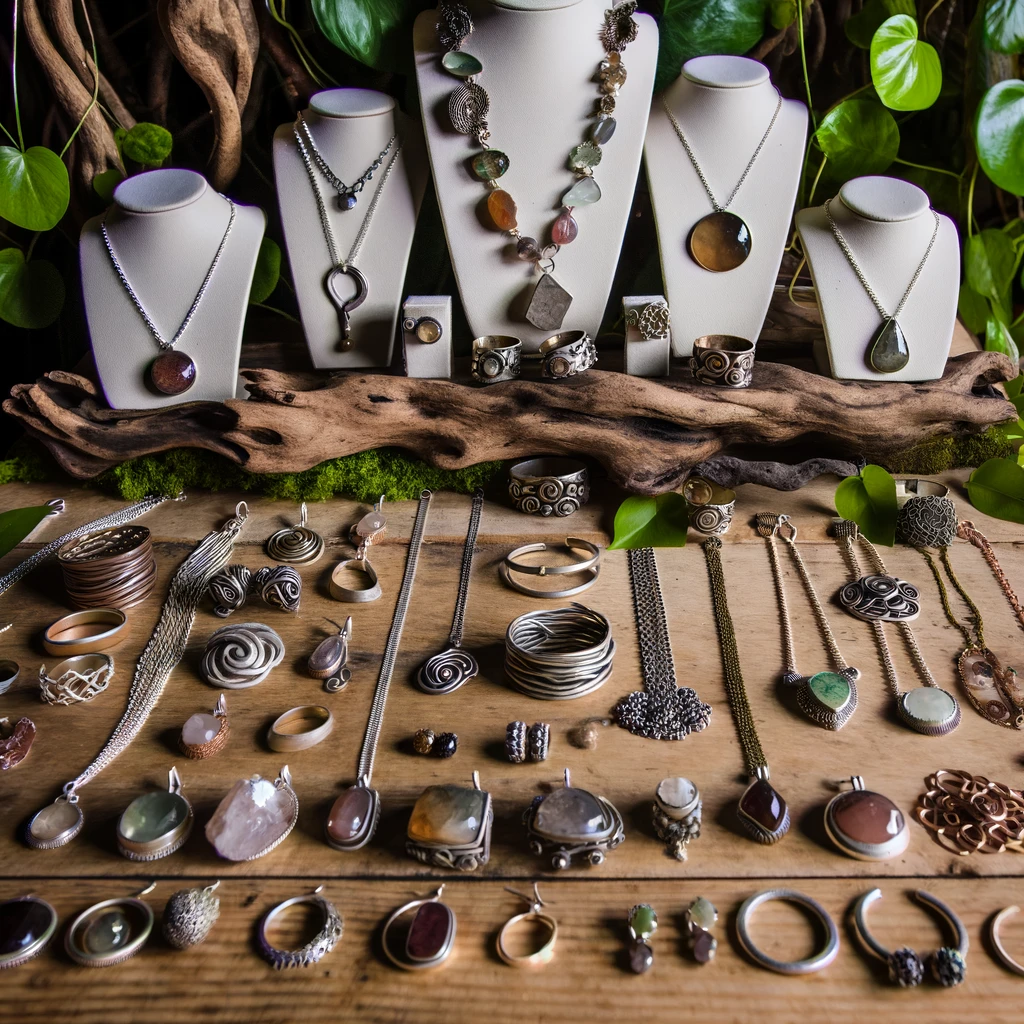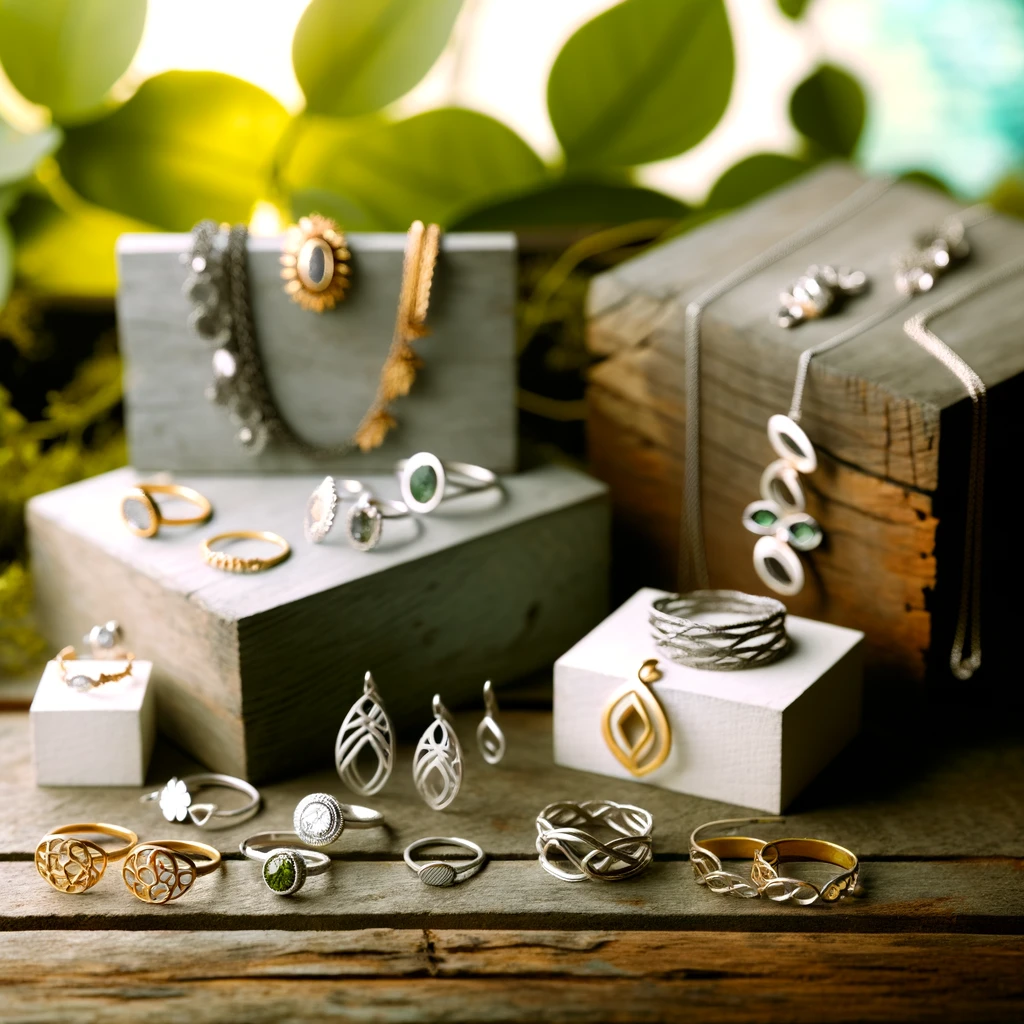Unveiling the Beauty: Exploring the World of Ethical Jewellery
Welcome to the dazzling world of ethical jewelry, where beauty meets conscience. This article will delve into the captivating realm of sustainable and responsible jewelry practices, unveiling a universe of ethically sourced gemstones and metals that radiate style and integrity.
Ethical jewelry is a testament to the industry’s growing awareness and demand for transparency. From conflict-free diamonds to fair-trade gold, ethical jewelry takes us on a journey backed by values of social and environmental responsibility. It goes beyond mere adornment, empowering consumers to make conscious choices that positively impact communities and our planet.

Exploring the world of ethical jewelry will reveal the remarkable stories behind each piece, highlighting the artisans and brands that prioritize ethical sourcing and production methods. From innovative design techniques to cutting-edge technologies, the possibilities are endless.
Join us as we unravel the hidden gems of ethical jewelry, where luxury and sustainability intertwine seamlessly, creating a harmonious balance between beauty and ethics. Prepare to embark on an enchanting journey into a world that sparkles with conscious elegance, proving that ethical choices can be just as stylish and luxurious.
The importance of ethical sourcing in the jewellery industry
The jewelry industry, often perceived as a symbol of opulence, glamour, and luxury, harbors a stark contrast. Beneath the shimmer and sparkle, a dark side of unethical practices emerges, including human rights violations, environmental damage, and support for conflict and violence. This stark reality underscores the pressing need for ethical sourcing in the jewelry industry.
Ethical sourcing, a practice that ensures the responsible and sustainable acquisition of materials for jewelry production, offers significant benefits to consumers. These include traceability, fair trade practices, and adherence to international standards. By opting for ethically sourced jewelry, consumers can be confident that their purchase has not contributed to any negative social or environmental impacts.
Ethical sourcing, beyond its environmental and social benefits, is a beacon of hope for miners, artisans, and communities in the jewelry supply chain. Ethical jewelry brands are not just making a difference, they are empowering individuals and fostering sustainable economic growth by championing fair wages, safe working conditions, and community development.
Fair trade and ethical certifications in the jewellery industry
One way to ensure the ethical sourcing of jewelry is to look for fair trade and ethical certifications. These certifications ensure that the materials used in jewelry production have been sourced responsibly and meet strict social and environmental standards. Fairtrade certification guarantees that the miners and workers producing the materials have been paid fair wages and are working safely. It also prohibits the use of child labor and promotes gender equality. By purchasing jewelry with fair trade certification, consumers can support the empowerment of marginalized communities and contribute to a more equitable industry.
In addition to fair trade certification, there are several other ethical certifications to look out for, such as the Responsible Jewellery Council (RJC) certification and the Kimberley Process Certification Scheme (KPCS) for diamonds. These certifications ensure the jewelry has been sourced responsibly and does not contribute to conflict or human rights abuses.
Sustainable materials in ethical jewellery
Another critical aspect of ethical jewelry is the use of sustainable materials. Traditional jewelry production often involves the extraction of precious metals and gemstones in ways that harm the environment and local communities. In contrast, ethical jewelry brands embrace innovative materials and production methods that minimize their ecological footprint.
One example of sustainable materials in ethical jewelry is recycled gold and silver. By using recycled metals, jewelry designers can reduce the demand for new mining and the associated environmental impacts. Recycled metals are obtained from old jewelry pieces, industrial waste, and electronic components, reducing the need for destructive mining practices.

Ethical jewellery brands and designers to know
Ethical jewelry has given birth to a new generation of designers and brands prioritizing sustainability and responsible practices. These ethical jewelry brands are not only creating beautiful pieces but also making a positive impact on communities and the environment. One such brand is Bario Neal, a pioneer in ethical jewelry. They are committed to using ethically sourced materials and promoting transparency in their supply chain. Bario Neal works with small-scale miners, ensuring fair wages and safe working conditions. They also prioritize recycled metals and use traceable gemstones in their designs. Another notable brand is Vrai, which specializes in lab-grown diamonds and sustainable materials. Vrai believes in the power of technology to create beautiful and ethical jewelry. Their lab-grown diamonds are grown using renewable energy and have a significantly lower carbon footprint than mined diamonds.
Tips for buying ethical jewellery
When buying ethical jewelry, there are a few key considerations to remember. Here are some tips to help you make an informed and conscious choice:
- Research the brand: Look for brands prioritizing ethical sourcing and production methods. Check if they have certifications or transparency reports that provide insight into their supply chain.
- Ask questions: Ask the brand or retailer about their sourcing practices. Inquire about the materials’ origin and the artisans’ working conditions.
- Look for certifications: Seek out jewelry with fair trade, RJC, or KPCS certifications. These certifications ensure that the jewelry has been sourced responsibly.
- Consider alternative materials: Explore jewelry made from recycled metals or lab-grown diamonds and gemstones. These materials offer a more sustainable and ethical alternative to traditional options.
- Buy from local artisans: Support local jewelry designers and artisans who prioritize ethical practices. This ensures that your purchase has a positive impact on the local community.
By following these tips, you can consciously choose and contribute to a more ethical and sustainable jewelry industry.
The impact of unethical practices in the jewellery industry
The jewelry industry has long faced criticism for its unethical practices, which have far-reaching impacts on people and the planet. The consequences of unethical practices in the jewelry industry are significant, from environmental degradation to human rights abuses.

One of the most well-known issues is the trade in conflict diamonds, also known as blood diamonds. These diamonds are mined in war zones and used to finance armed conflict against governments. The trade in conflict diamonds has fueled violence, human rights abuses, and environmental destruction in countries such as Sierra Leone, Angola, and the Democratic Republic of Congo.
Unethical practices in mining precious metals, such as gold, also have devastating consequences. Mining operations often involve the use of toxic chemicals, deforestation, and the displacement of indigenous communities. The environmental impacts of irresponsible mining include water pollution, soil degradation, and biodiversity loss.
Ethical jewellery and the environment
Ethical jewelry is about responsible sourcing and minimizing the industry’s environmental impact. Sustainable materials and production methods play a crucial role in reducing the ecological footprint of jewelry production.
As mentioned earlier, using recycled metals in jewelry production helps reduce the demand for new mining. By repurposing old jewelry and industrial waste, ethical jewelry brands can significantly decrease the environmental impacts associated with mining operations.
Lab-grown diamonds and gemstones are another environmentally friendly alternative. Growing diamonds in a laboratory requires significantly less energy and water than diamond mining. It also eliminates the need for destructive mining practices, reducing deforestation and habitat destruction.
Ethical jewellery and social responsibility
Ethical jewelry is about responsible sourcing and minimizing the industry’s environmental impact. Sustainable materials and production methods play a crucial role in reducing the ecological footprint of jewelry production.
As mentioned earlier, using recycled metals in jewelry production helps reduce the demand for new mining. By repurposing old jewelry and industrial waste, ethical jewelry brands can significantly decrease the environmental impacts associated with mining operations.

Lab-grown diamonds and gemstones are another environmentally friendly alternative. Growing diamonds in a laboratory requires significantly less energy and water than diamond mining. It also eliminates the need for destructive mining practices, reducing deforestation and habitat destruction.
Conclusion: The future of ethical jewellery
The world of ethical jewelry is a powerful testament to the influence of conscious consumerism. It illuminates the fact that beauty and ethics can harmoniously coexist, and that our choices, no matter how small, hold the potential to create a significant positive impact on the world. As consumers increasingly recognize the social and environmental implications of their purchases, the demand for ethical jewelry is on a steady rise. This shift in consumer behavior has spurred brands and designers to embrace responsible sourcing and production practices, paving the way for a more sustainable and transparent industry.
The future of ethical jewelry is a realm of boundless potential for innovation and positive change. The horizons are limitless, from breakthroughs in sustainable materials to the utilization of blockchain technology for enhanced traceability. By championing ethical jewelry brands and making mindful choices, we can actively contribute to a future for the industry that is more ethical, just, and sustainable.
Join us in unveiling the beauty of ethical jewelry and let your adornments shine with the radiance of conscious elegance. Together, we can transform the jewelry world into a realm of beauty, integrity, and social and environmental responsibility.
Discover more about ethical living and conscious consumerism on our blog. Visit our blog and join the movement towards a more sustainable future!

